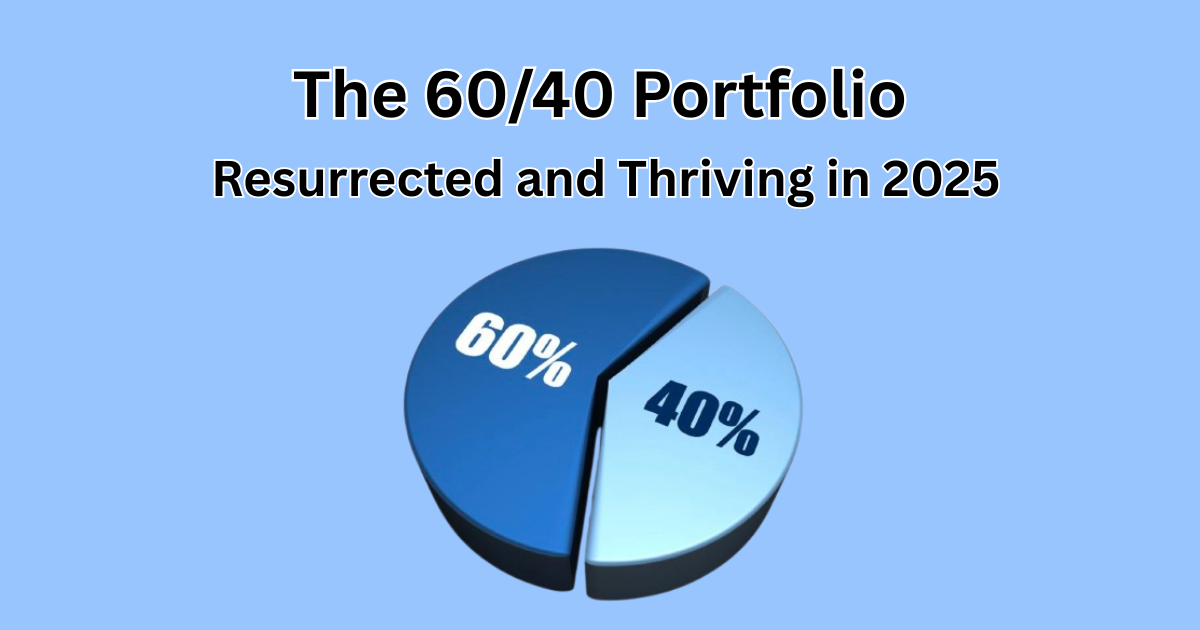
Get Over $6K of Notion Free with Unlimited AI
Startups move fast. That's why thousands of startups worldwide trust Notion as their connected, customizable workspace. In one place, you can organize, plan, and execute—whether you're managing investor outreach, documenting key decisions, or scaling operations.
Apply now to get up to 6 months of Notion with unlimited AI free, a $6,000+ value. Access AI's limitless potential right inside Notion and build your company with one powerful tool.

Welcome to The Profit Zone 👋
Where thousands of millionaires, CEO’s and high-performing entrepreneurs read the #1 financial newsletter on the web.


👉 Donald Trumps Latest on the “Trade War”: Chinese Tariffs Reduced and Trade Agreement with the U.K. 🗒
👉 The Case for Small-Cap Value Stocks in a Tech-Heavy Market: The Pros and Cons of Owning Small-Cap Value Stocks 💰
👉 Scale Your Portfolio in 2025: Strategies You May Not Have Thought Of To Grow Your Wealth to Astronomic Levels 📈


“All intelligent investing is value investing. Acquiring more that you are paying for. You must value the business in order to value the stock.”


Donald Trumps Latest on the “Trade War”

U.S stocks ended last week in quieter fashion than expected after Trump’s trade agreement with the U.K. and his proposal of 80% tariffs on Chinese imports, a reduction from the 145% tariffs imposed earlier this year.
The Dow Jones Industrial Average dipped, while the Nasdaq Composite and S&P 500 hovered near flat.
The proposed 80% tariff (though lower) still threatens trade relations between the U.S. and China.
U.S. and Chinese officials, including Treasury Secretary Scott Bessent, will meet to try to de-escalate tensions.
China’s April data revealed a sharp decline in U.S. exports (down over 20% year-over-year) while Southeast Asia shipments grew.
Investors await comments from the Federal Reserve as well after warning tariffs could increase unemployment and inflation, opting to hold interest rates steady.


The Case for Small-Cap Value Stocks in a Tech-Heavy Market
Small-cap value stocks, which are characterized by low price-to-earnings (P/E) ratios and market capitalizations typically under $2 billion, provide investors a big opportunity in todays tech-heavy market.
Large-cap growth stocks, mainly in the tech space, continue to dominate portfolios but come with inflated valuations.
Smaller-cap value stocks offer investors like you diversification, undervaluation and resilience in a quickly growing sector.
Lets talk numbers…
Over the last 20 years, the Russell 2000 Value Index $IWN ( ▲ 1.94% ), a benchmark for small-cap value, delivered an annualized return of 7.55%.
The Russell 1000 Growth Index $IWF ( ▲ 0.16% ), a benchmark for mid-larger cap growth stocks, delivered an annualize return of 12.16%.
That presents a better case for mid-larger cap growth stocks, but lets dive more into the numbers and see why it’s not always about total return.
In 2022, when inflation surged and interest rates rose, the Russell 2000 Value Index fell by -20.48%, while the tech-heavy Nasdaq Composite fell nearly 33%.
This difference highlights small-cap value’s resiliency in inflationary environments, as these companies typically operate domestically, making them less exposed to global supply chain disruptions that have more of an impact on the tech giants.
As of May 8, 2025, the Nasdaq’s forward P/E ratio is ~24.43, which is considered to be stretched given the Nasdaq’s historical P/E chart below, with the exception of 2001.
In contrast, the Russell 2000 Value Index current TTM P/E ratio is 13.5, as per Yahoo Finance on May 8, 2025.
This gap could suggest that small-cap value stocks are currently undervalued compared to the giants of the Nasdaq, offering a margin of safety and growth potential for you as an investor when market sentiment shifts from growth to value, as it does often.
Finally, small-cap value stocks provide diversification benefits.
Their correlation with large-cap tech stocks is low, averaging ~0.65 over the past decade. The reduced correlation helps to stabilize portfolios when tech stocks fall.
Additionally, small-cap value stocks are frequent acquisition targets and can boost returns for shareholders.
Another thing to note is that small cap stocks have outperformed the smallest large cap stocks, dating back to 1990.
Looking at the chart below, you can see the comparison between the Russell 2000 and the bottom tercile of the Russell 1000 by market cap.
The results speak for themselves.
With all that being said, small-cap value stocks can be volatile, with higher beta’s than large-cap stocks.
Some may even be value traps, in other words a stock with low valuations due to weak fundamentals.
And while small-cap stocks thrive in certain conditions, they can lag during tech-driven bull markets, as we saw in 2020.
Small-cap stocks still offer you a solid hedge in your portfolio.
And you can own them through an ETF like the Vanguard Small-Cap Value ETF $VBR ( ▲ 2.04% ) or by picking them individually (though more of a risky approach).
With their historical outperformance in certain markets, attractive valuations, and diversification benefits, small-cap value stocks can be a strategic addition to your portfolio in 2025.
See you in the next one!




Did you enjoy this newsletter?


Are you interested in supercharging your portfolio?
I’m thrilled to be sharing with you a powerful strategy that can hep you scale your portfolio to levels you didn’t think were possible.
Good investors are always learning and evolving.
To build your wealth to a point that allows you to live comfortably without stress involves embracing innovative techniques you may not have considered before.
While holding quality stocks is a great start, advanced strategies can dramatically boost your profits, helping you reach your goals faster.
I recently took a transformative course that reshaped my understanding of the stock market, and I swear by it.
Here’s what people are saying:


The value in this course far outweighs its cost.
I’ve earned thousands using these methods, and I’m confident you can too.
This course covers it all: stock market basics, options trading, risk management, and creating steady cashflow.
Hundreds of investors have seen remarkable results from it.
And you’re learning from an investor who has gotten results using these exact strategies.

Note: Using my link may earn me a commission at no extra cost to you.

Disclaimer: The publisher does not guarantee the accuracy or completeness of the information provided in this page. All statements and expressions herein are the sole opinion of the author or paid advertiser.
Dividend Domination Inc. is a publisher of financial information, not an investment advisor. We do not provide personalized or individualized investment advice or information that is tailored to the needs of any particular recipient.
THE INFORMATION CONTAINED ON THIS WEBSITE IS NOT AND SHOULD NOT BE CONSTRUED AS INVESTMENT ADVICE, AND DOES NOT PURPORT TO BE AND DOES NOT EXPRESS ANY OPINION AS TO THE PRICE AT WHICH THE SECURITIES OF ANY COMPANY MAY TRADE AT ANY TIME. THE INFORMATION AND OPINIONS PROVIDED HEREIN SHOULD NOT BE TAKEN AS SPECIFIC ADVICE ON THE MERITS OF ANY INVESTMENT DECISION. INVESTORS SHOULD MAKE THEIR OWN INVESTIGATION AND DECISIONS REGARDING THE PROSPECTS OF ANY COMPANY DISCUSSED HEREIN BASED ON SUCH INVESTORS’ OWN REVIEW OF PUBLICLY AVAILABLE INFORMATION AND SHOULD NOT RELY ON THE INFORMATION CONTAINED HEREIN.
Any projections, market outlooks or estimates herein are forward-looking statements and are inherently unreliable. They are based upon certain assumptions and should not be construed to be indicative of the actual events that will occur. Other events that were not taken into account may occur and may significantly affect the returns or performance of the securities discussed herein. The information provided herein is based on matters as they exist as of the date of preparation and not as of any future date, and the publisher undertakes no obligation to correct, update or revise the information in this document or to otherwise provide any additional material.
The publisher, its affiliates, and clients of the publisher or its affiliates may currently have long or short positions in the securities of the companies mentioned herein or may have such a position in the future (and therefore may profit from fluctuations in the trading price of the securities). To the extent such persons do have such positions, there is no guarantee that such persons will maintain such positions.
Neither the publisher nor any of its affiliates accept any liability whatsoever for any direct or consequential loss howsoever arising, directly or indirectly, from any use of the information contained herein.
By using the Site or any affiliated social media account, you are indicating your consent and agreement to this disclaimer and our terms of use. Unauthorized reproduction of this newsletter or its contents by photocopy, facsimile or any other means is illegal and punishable by law.







